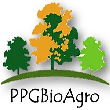Banca de DEFESA: ANDERSON ALEX SANDRO DOMINGOS DE ALMEIDA
Uma banca de DEFESA de MESTRADO foi cadastrada pelo programa.DISCENTE : ANDERSON ALEX SANDRO DOMINGOS DE ALMEIDA
DATA : 30/03/2022
HORA: 13:30
LOCAL: Google Meet
TÍTULO:
NeoTropTrans 1.0, a database for the conservation of plant biodiversity in the Cerrado-Amazon transition
PALAVRAS-CHAVES:
Biological Database, ecotone, Flora, Biodiversity Platforms
PÁGINAS: 51
GRANDE ÁREA: Ciências Biológicas
ÁREA: Ecologia
SUBÁREA: Ecologia de Ecossistemas
RESUMO:
The standardization of biological information dispersed in biodiversity platforms is essential to condense complete and reliable information on species composition and physical characteristics of the environment. Thus, our objective was to build a database with plant species occurring in the Cerrado-Amazon transition (CAT), containing the collection records and their geographic coordinates. Based on this database, called ‘NeoTropTrans’, we seek to answer the following questions: 1) What are the most representative species, genera and families in the CAT? 2) What are the best-sampled regions and vegetation types and those with the greatest gaps in collections? 3) How are species occurrence records distributed along the different land use and land cover categories in the CAT? The occurrence records of plant species (angiosperms, gymnosperms and ferns) were obtained from the speciesLink, GBIF and REFLORA online platforms. We compiled 51,886 occurrence records for the Cerrado-Amazon transition, of which 50,523 of angiosperms, 14 of gymnosperms and 1,349 of ferns/lycophytes. Among these records, 28,536 were for trees, 19,665 for shrubs, 9,970 for herbs, 6,619 for vines (woody and non-woody), 5,203 for subshrubs, 618 for palms, 50 for bamboos and 24 for succulents. The occurrence records were distributed in 209 families, 1,384 genera and 5,889 species. The families with the highest species richness were Fabaceae (699), Rubiaceae (317) and Poaceae (262). The genera with the highest species richness were Miconia (96), Piper (71) and Solanum (58). The families with the highest number of occurrences were Fabaceae (6,765), Rubiaceae (2,713) and Melastomataceae (2,276). The genera with the highest number of records were Miconia (1398), Protium (844) and Solanum (652). Among the most common species, Pourouma minor Benoist (214 records), Cheiloclinium cognatum (Miers) A.C.Sm. (174), Jacaranda copaia (Aubl.) D.Don (170), Myrcia splendens (Sw.) DC (160) and Siparuna guianensis Aubl. (144). We obtained 2,738 species occurring only in the Amazon and/or Cerrado, representing 46.49% of the total species present in the database. This ecotone, due to its large territorial area, provides diversified habitats, allowing the occurrence of species from adjacent biomes. With NeoTropTrans we hope to make better use of the data available on biodiversity platforms for the transition between the largest biogeographic regions of the Neotropics.
MEMBROS DA BANCA:
Interno - 253812001 - PEDRO VASCONCELLOS EISENLOHR
Interno - 253995001 - VINICIUS AUGUSTO MORAIS
Externo ao Programa - 132029001 - EDDIE LENZA DE OLIVEIRA
Externo à Instituição - CASSIA BEATRIZ RORIGUES MUNHOZ - UnB
Externo à Instituição - MÔNICA APARECIDA CUPERTINO EISENLOHR - UFMT



